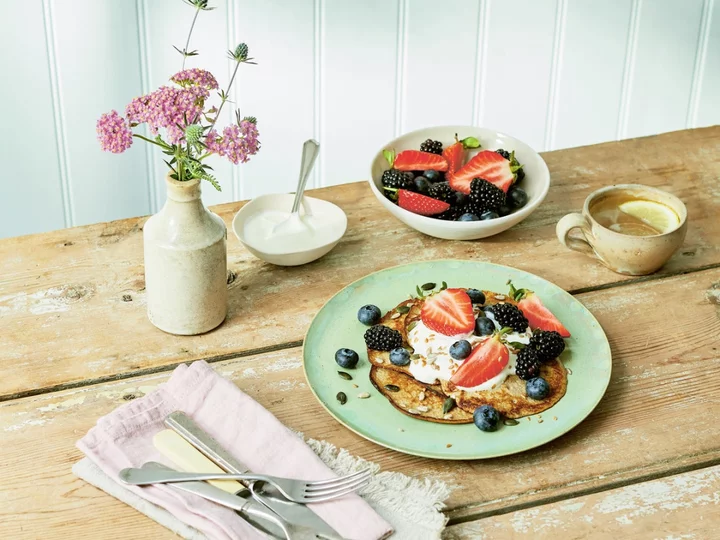
How to make protein pancakes without flour
These protein-packed, flourless pancakes can be made without the collagen, but the extra hit of amino acids in the morning is ideal for muscle-building and hunger control,” says functional nutritionist Pauline Cox. “When bananas are green, they have less sugar content… you decide how green you want to go. Delicious hot or cold!” Green banana pancakes Makes: 12 Ingredients: 1 greenish banana 2 eggs 1 tbsp collagen peptides (optional) ½ tsp ground cinnamon Coconut oil or ghee, for frying Natural yoghurt, fresh berries, chopped nuts and seeds, to serve Method: 1. Add the banana to a blender with the eggs, collagen (if using) and cinnamon, then combine to create a smooth batter. 2. Heat a small amount of coconut oil or ghee in a frying pan, and when the pan is hot, add 3-4 spoons of batter to create 3-4 mini pancakes. Cook for 2-4 minutes until golden in colour before flipping over to cook on the other side. 3. Serve with natural yoghurt, fresh berries, chopped nuts and seeds for extra goodness. ‘Hungry Woman’ by Pauline Cox (Ebury Press, £27). Read More Ditch Deliveroo – make these healthy, 30-minute pizzas instead Three quick and easy vegan fakeaway recipes The dish that defines me: Eddie Huang’s Taiwanese beef noodle soup Nutritionist explains how women can eat to help balance hormones The only three recipes you need to seize the summer How to shop at Borough Market in the summer
2023-07-05 13:46

The Scientific Reason You Should Microwave Popcorn With “This Side Up”
Microwave popcorn bags are often covered in words—here’s why you should pay attention to “This Side Up.”
2023-07-05 03:28

Hugh Jackman divides fans with savoury ‘cheat meal’ of waffles and mushrooms
Hugh Jackman has amused and confounded his followers after sharing a photo of his recent “cheat meal,” a plate of waffles topped with savoury mushrooms. Over the weekend, the Wolverine star took to Instagram to share photos of himself enjoying a meal at a waffle restaurant in England. The album began with an excited-looking Jackman holding up a fork, before including a photo of the menu at The Waffle House in Norwich. The post also included a photo of a plate of waffles topped with sauteed button mushrooms, and what appeared to be a red meat sauce and smoked ham cheddar cheese sauce. The dish was then garnished with herbs. The savoury waffles weren’t the only item ordered by the actor, however, as the post also included a photo of Jackman’s strawberry milkshake and one of his order of sweet waffles, which were topped with chocolate flakes, banana, peanut butter and powdered sugar. “Happy cheat meal to me! Nooo! I did not share. And I’m not sorry,” the actor captioned the photo album. However, in the comments, many of Jackman’s fans were confused by the first waffle combination, with some questioning the unique pairing. “MUSHROOMS ON WAFFLES? IS THIS THE WOLVERINE DIET?” one person jokingly asked, while another wrote: “Third pic is criminal.” “A cheat meal NEVER includes mushrooms,” someone else claimed, as another critic wrote: “Sweet waffle yes! Savoury, nooo!” Despite the concern from some of Jackman’s followers over the savoury-topped waffle, others said they’d happily indulge in the actor’s cheat meal. “OMG! I’ve never had a savoury-topped waffle but that looks delicious!! You deserve to enjoy all of your cheat meal so I’m glad you didn’t share,” one person commented, while another said: “Just give me those mushrooms and I’ll be in heaven.” The meal also prompted some to compare the savoury dish to chicken and waffles, with one viewer urging a critic to try the popular dish “with a side of mashed potatoes”. This is not the first time Jackman has shared insight into his unlikely “cheat meals,” as the actor previously told E! News that he enjoys “sort of weird simple stuff like lasagna”. “It’s sort of weird simple stuff like lasagna,” he said. “I like breakfast cereal at 11 at night, all that kind of easy simple stuff. In Australia, it’s meat pies.” Read More Hugh Jackman reveals he tested negative for skin cancer after undergoing two biopsies Child, 8, raises more than $37,000 to help his favourite Waffle House employee get a car Ditch Deliveroo – make these healthy, 30-minute pizzas instead The dish that defines me: Eddie Huang’s Taiwanese beef noodle soup Nutritionist explains how women can eat to help balance hormones
2023-07-05 00:57
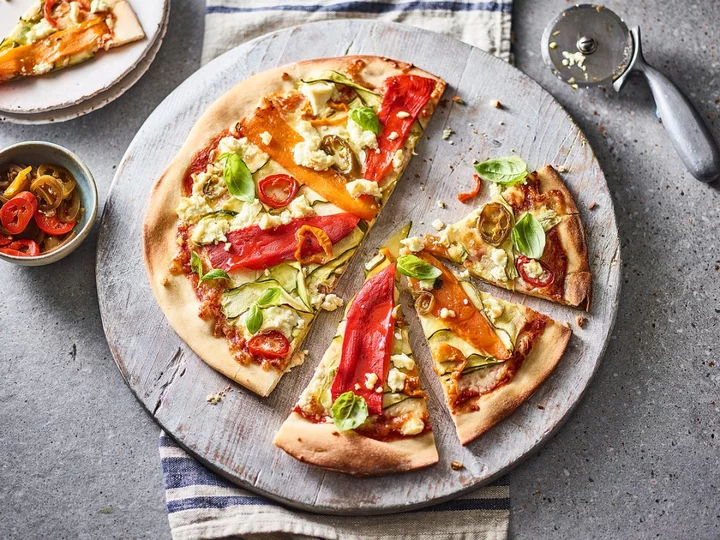
Ditch Deliveroo – make these healthy, 30-minute pizzas instead
Stop ordering pizzas on Uber Eats and get into the kitchen to make your own. These spicy feta, pepper and courgette pizzas from Cooks&Co will be hot and ready to eat long before a delivery driver gets there with your cold, soggy takeaway. Swap meat for vegetables and mozzarella for feta and you can call it a healthy win, too. Spicy feta, pepper and courgette pizzas Serves: 4 Prep time: 15 mins, plus defrosting | Cooking time: 12-15 mins Ingredients: 2 x 220g frozen pizza dough balls, defrosted 100g pizza sauce 200g grated mozzarella 1 courgette, cut into ribbons 150g Cooks&Co Roasted Red and Yellow Peppers, quartered 25g Cooks&Co Tri-colour Jalapeno Slices 100g feta To serve: Drizzle extra virgin olive oil Basil leaves Method: Preheat the oven to 240C/gas mark 9. On a floured surface, roll out each dough ball into a rough 30cm round and place on 2 large lightly floured baking trays. Spread with the pizza sauce leaving a 2cm border. Sprinkle with cheese and top with courgette ribbons, peppers and jalapenos. Crumble over the feta and drizzle with a little olive oil. Bake for 12-15 minutes. Drizzle with extra oil and scatter over a few basil leaves to serve. Cooks tip: Add spoonfuls of mascarpone instead of feta. For more recipes, visit cooksandco.co.uk Read More Three quick and easy vegan fakeaway recipes The dish that defines me: Eddie Huang’s Taiwanese beef noodle soup Nutritionist explains how women can eat to help balance hormones The only three recipes you need to seize the summer How to shop at Borough Market in the summer Budget Bites: Three light recipes that sing of summer
2023-07-04 18:23

How to Track Down Ice Cream Trucks Near You
These online tools can help you locate the nearest ice cream truck in your neighborhood.
2023-07-04 01:17

The dish that defines me: Eddie Huang’s Taiwanese beef noodle soup
Defining Dishes is a new IndyEats column that explores the significance of food at key moments in our lives. From recipes that have been passed down for generations, to flavours that hold a special place in our hearts, food shapes every part of our lives in ways we might not have ever imagined. My earliest memory of Taiwanese beef noodle soup is the first time I compared the version my mother makes and then going out to eat it at restaurants. It was just terrible outside the walls of my home, just a sad watery soup with no flavour. I was born in Washington DC but grew up in Orlando. In America, and even in some places in Taiwan, there are a lot of places that are lazy when it comes to making beef noodle soup. They just whip up a thin broth with ginger, spring onions, some type of chilli. Then there are other places trying to do expensive s***. They’ll try and promote it by saying, “Oh, I use dry aged beef” or “I use this super expensive stock”. But that’s all unnecessary. What Taiwanese beef noodle soup needs is time, not anything fancy. What do we do when we cook? We apply the right level of heat to the proper amount of time to the proper ratio of ingredients. That’s it. With this dish, the longer you let it simmer, the better it is. The flavour develops and becomes richer, the beef becomes fall-apart tender. It’s so simple and humble, all it takes is time. I make mine using two separate stocks. I make a master stock, which begins with simmering meat and bones for a long time so it becomes really flavourful. Then I make another stock with my aromatics – including ginger, spring onions, garlic, fresh chili peppers and dried red chili peppers, and Szechuan peppercorns – and sauces, like dark and light soy sauce and rice wine. Doing it separately allows me to strain the aromatics out and keep the broth really clean so that each bite is consistent. For the protein, I use beef shank and oxtail. The thing that sets my beef noodle soup apart is that I use chilli oil as well as fresh chilli for that acid kick. That’s something I haven’t seen other people do, most dishes use just chilli oil. I’m also quite loyal to tomatoes in my beef noodle soup. A lot of people make it with either tomato or no tomato, it’s one of those divisive things. People will ask, “Are you a tomato beef noodle soup guy or you’re not a tomato guy?” I’m a tomato guy because it gives the dish more umami and another layer of acidity. The chillies and tomatoes combined deliver different levels of acidity. Between those three, they cut through the fattiness of the beef. I don’t over-skim my soup either, I leave all the globs of fat in there to keep it rich, but the acidity stops it from being excessive. I’m agnostic about the type of noodle I use in my soup. I served it once to my homies with a really good number 10 Italian spaghetti, which is a finer noodle than regular spaghetti. They were like, “Yo, this is crazy”. It totally changed the dish, I’ve never had it like that. Most people use a Chinese wheat noodle, some do knife-cut noodles and others do hand-pulled. They’re all fine for me. I’m mainly here for the broth, which I’ll just drink a lot of the time. I do like knife-cut noodles though, I would love to try that. But mostly I will serve it with a Chinese wheat noodle or spaghetti, because it’s the closest you can get to wheat noodles if you can’t get them. The difference between my mum’s beef noodle soup and mine is that she doesn’t add the chilli oil and fresh chillies. But I have to say that my mum will tell you that my beef noodle soup smokes hers. It’s just that much better. She does not f*** with me anymore. There are certain dishes that I practice so much and she just says, “I’m not playing with you anymore, right?” But she’s still the best at home-style small dishes and stir fries, like baby dried fish with peanuts, red-cooked pork or lion’s head meatballs. But some other dishes, my mum gives me the nod. She doesn’t make them anymore, she’s like, “You make it”. It’s fun to say, “Alright, you taught me and I really, really mastered it”. I was never one to do it just like my mum. I was always going to learn how she does it and then I’m going to make it a little bit better. Beef noodle soup is incredibly close to my heart, it’s the only dish that occupied an entire chapter of my memoir, Fresh Off The Boat. I wrote at the time that the best part of beef noodle soup is that there are no rules and you can add whatever you like as long as it has the essentials: beef, noodle, and soup. I like it the most because there is nowhere to hide with this dish. Just take your time. Eddie Huang is the chef-founder of Baohaus. He wears many hats, including author, presenter and director. Read More Eddie Huang: ‘I’ll never eat at BAO London – I know mine’s better’
2023-07-03 23:28
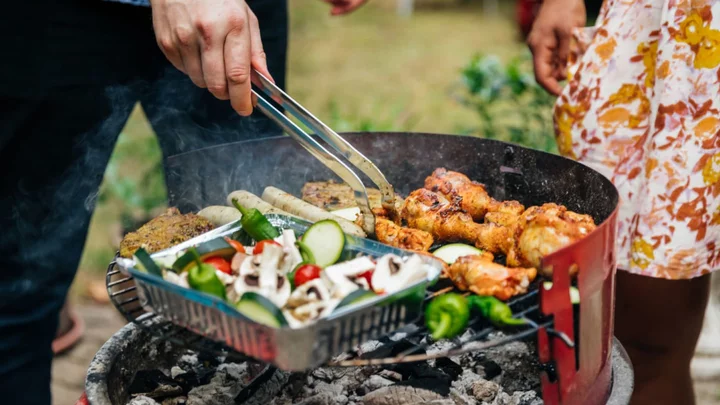
Barbecuing vs. Grilling: What’s the Difference?
Though they’re sometimes used interchangeably, grilling and barbecuing describe distinct methods of outdoor cooking.
2023-07-03 23:22

How to shop at Borough Market in the summer
Food markets fizz with a very particular kind of energy in the summer months. That’s as true anywhere as at Borough Market where the energy somehow hits me as I’m still walking the stairs up from London Bridge tube, way before I even see the market gates. It’s not just the sun’s moodlift that makes things palpably different in the summer than at any other time of year – it’s the distinctive culmination of the summer vibes that marketgoers bring. Whether seasonal cooks there to stock up on longed-for summer produce; friends on a wander for a day out; or food lovers after a few deliciously easy wins to enjoy on a rug somewhere. Any kind of picnic (garden/beach/park/lounge) can be so easily catered for at a food market. In one swoop you can pick up chilled bottles of interesting wines, beers and softs; breads for ripping into; butter and seasonal young cheeses; charcuterie; salty black olives, and all kinds of fabulous fruits. Tins of preserved fish make for interesting rug-chat over the beautiful boxes. At Borough there’s no shortage of choice of those at The Tinned Fish Market stall. Sometimes there I’ll go for the Cântara small squid stuffed with onion, rice and tomatoes; other times the Pepus mussels in escabeche. Or else it’s the never-fail Ortiz tuna at Brindisa, home to so many foods that are a picnic-maker’s dream. (Fino sherry, truffle crisps, jamon, salted almonds… do I need to go on?) That ease the food markets gift to feeding a gathering translates seamlessly to the ease they offer summer’s everyday cooking and eating. The stalls (almost) struggling to fit in all the magnificent seasonal produce that is so often best enjoyed when hardly anything is being done to it. Courgettes, peppers and aubergines gleam with proud beauty among the glory of all the other summer vegetables and fruits. Pods of garden peas and broad or borlotti beans beg to be bought by the bagful. All of them are a joy to mindlessly and mindfully pop out of the shells when you get home, but the borlottis perhaps most of all as that’s the only way to really be able to admire the purple mottles of the bean before it disappears upon cooking. The best seasonal tomatoes need little more than olive oil and salt to bring out their supreme flavour. Salad options are inexhaustible – go for big sharing bowls of a fattoush or panzanella; or the neat Nicoise bundles featured in Borough Market: The Knowledge. There the classic Nicoise elements of anchovy, mayonnaise, capers and egg are piled aboard little gem boats for ease of eating. Another of my all-time favourite summer salads is in that book too: oregano-poached peaches, halloumi and hazelnuts. Its mix of sweetly salty flavours manages to be simultaneously refreshing and completely beautiful on the plate. The peaches in it becoming the very best version of themselves by being poached with dried oregano and honey. The choice of honey is no accident. In the summer I always make sure to stock up at the market on blossom honeys that will delicately yet effectively infuse so many foods – and drinks – with a floral undernote. Perhaps the lavender honey at From Field and Flower, or the wild thyme at Oliveology. That’s the one I use in the dressing for making The Knowledge’s labneh with watermelon, honey and mint. It’s a recipe that straddles the boundary of sweet and savoury, with watermelon griddled in olive oil, orange and sumac for peak refreshment. My top tip in making this is to always do more labneh than needed in the recipe because it is such a useful thing to be able to reach for in the fridge. All it takes is 900g of really good, thick Greek yoghurt mixed with 1 teaspoon of salt and spooned into a muslin-lined sieve. Let that drain for 6-12 hours (depending how thick you want it – longer equals thicker) and the result is approximately 500g of labneh. Use it for salads, or to spread on toast with perhaps just a few sliced apricots. Summer is mackerel season at the market. A fish that is packed with flavour and goodness, and also incredibly easy to cook. Griddle it, bake it, fry it, or over-fire it. And then, when any kind of cooking seems impossible in the heat, even sit it in vinegar for a while and let its acidity do the “cooking” for you. Try the same thing with the small fresh anchovies that the fishmongers also have in now. They absolutely don’t need to be gutted, but the skilled fishmonger will happily do it for you (and at the same time showcase exceptional filleting knife skills). Whenever I head to the market on a produce-shopping mission it tends to be just that – a mission. I do try to make sure to spend time checking out what is what because the very nature of market shopping is that it is never the same. What the stalls offer week on week is at the mercy of not just the season but whatever choices traders have been made on what to stock that week, that day. Yet, as I beetle around, I am always a bit envious of the market wanderers. It’s a feeling that grows even stronger in the summer when these marketgoers without any agenda of shopping lists to mark off, or a fridge to fill, are enjoying being among all the glorious foods on the day out with friends and family. With nothing to do except admiringly soak it all up while stopping off for the occasional energy-boost by way of an ice-cream or a glass of something coolly bolstering. What a great way to spend a day. The cooks, the picnic-ers, the wanderers. Each as welcome and as catered for in a summertime market. All playing a key role in building the atmosphere that makes these months there so deliciously special. For more information on what you can find at Borough Market, visit: boroughmarket.org.uk Read More Three quick and easy vegan fakeaway recipes The only three recipes you need to seize the summer Budget Bites: Three light recipes that sing of summer What the hell is Scandinavian food? Lighter fish pie: Comfort food you won’t feel guilty for eating How to make Norwegian potato pancakes
2023-07-03 14:18
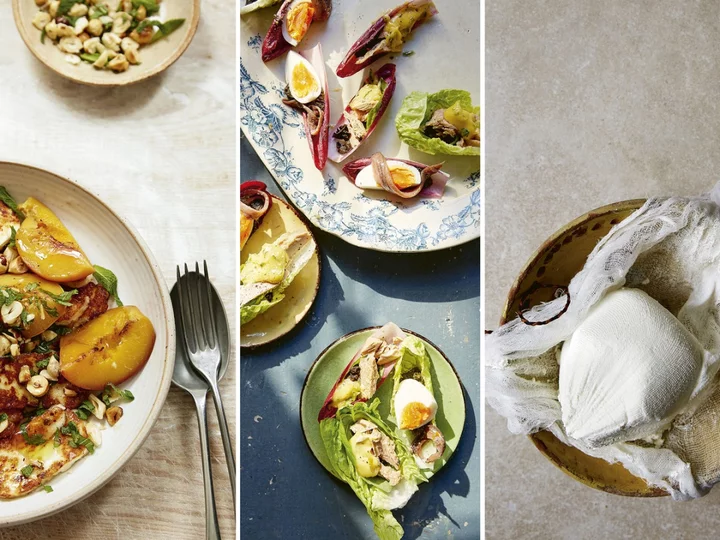
The only three recipes you need to seize the summer
As the weather warms up and the nights get longer, there’s nothing better than a light and colourful summery feast in the garden, balcony, doorstep or basically any perch in the sun you can find. And there’s few who do it quite as well as Angela Clutton, author of Borough Market: The Knowledge. In her summer column for The Independent, she shares one of her all-time favourite salads: oregano-poached peaches, halloumi and hazelnuts. A mix of sweet and salty flavours, it’s simultaneously refreshing and completely beautiful on the plate. What’s summer without tomatoes? Terrible, that’s what. Clutton says the best seasonal toms need little more than olive oil and salt to bring out their supreme flavour and the salad options are inexhaustible. But one not to be missed is her Nicoise “bundles”. The classic Nicoise elements of anchovy, mayonnaise, capers and egg are piled abord little gem boats for ease of eating. Lastly, her labneh with watermelon, honey and mint is a recipe that straddles the boundary of sweet and savoury, perfect for those for whom dessert is not a priority. Her top tip is to always do more labneh than needed, as it’s such a useful thing to be able to reach for in the fridge. Equipped with these recipes, you’ll be dining al fresco – or faking it indoors if it, ahem, rains – all summer long. Oregano-poached peaches, halloumi and hazelnuts There are fresh herbs, there are dried herbs, and then there are frankly incredible dried herbs. Into that last camp fall dried herbs that are produced to exceptionally high standards and don’t just harness the flavour of the starting point, but elevate it. Those are the only dried herbs really worth having in your store cupboard. This recipe goes for poaching fresh peaches with dried oregano, which brings even more depth of flavour than fresh oregano would. Given the choice, I use one of the beautiful dried sprigs at Oliveology, but their ground oregano is lovely too. The poaching liquor is then reduced to a fragrantly sweet syrup for pouring over tender peach slices and fried halloumi, and finished with seasoned toasted nuts and mint. Perfect for a hot day. Serves: 2 as a main, 4 as a side or small plate Ingredients: 2 tsp dried oregano (or an Oliveology dried sprig) 1 tbsp honey 1 orange 2 peaches 40g skinned whole hazelnuts 1 tbsp fruity olive oil 6 sprigs of mint 225g halloumi Method: Pour 500ml water into a medium saucepan. Add the dried oregano (or oregano dried sprig), the honey and two broad strips of zest from the orange. Bring to the boil and, meanwhile, quarter and stone the peaches. Put them into the water, lower the heat to a simmer and sit a piece of baking paper on top. Simmer for 7-10 minutes until the peaches are fully tender. Use a slotted spoon to lift the peaches out and set aside. If their skins start to flake away as they cool, just peel them off. Strain the poaching liquor, discard the oregano and orange peel, then pour the poaching liquor back into the saucepan. Don’t worry if a few pieces of oregano are left in the liquid. Boil over a high heat for 10-15 minutes to reduce to a syrup – you are aiming for about 75ml syrup. While the poaching liquor reduces, toss the hazelnuts in the olive oil along with some salt flakes and freshly ground black pepper. Set a small dry frying pan over a low heat, then add the seasoned nuts and stir for 3 minutes or until they are just getting nicely toasted. Transfer to a bowl. Once they have cooled, roughly chop with the leaves from the mint sprigs. Cut the poached peach quarters into slices about 1cm thick. Once the syrup is almost sufficiently reduced, cut the halloumi into 1cm-thick slices. Set the same frying pan the nuts cooked in back onto the heat, then add the halloumi pieces turning each over after 2 minutes or so once they are browned. You might need to do this in two batches. Serve either on individual plates or on a large platter. Sit the halloumi on first, then arrange the peach slices prettily on top, scatter over the seasoned nut and mint mixture, and finish by spooning over your oregano-infused peach syrup. Niçoise bundles The classic niçoise salad is served here as individual bundles that are perfect for a summer lunch or starter. I’m giving you two versions: one layers up blitzed olives and capers with egg and an anchovy; for the other, flaked tuna sits on an olive bed with tarragon mayo. Their simplicity makes it important that each ingredient is chosen for maximum flavour. Perhaps especially the fish. I make these with (my favourite) Brindisa Ortiz anchovies and the same maker’s yellowfin tuna belly ‘ventresca, which in one bite of its long, tenderly rich hakes took me from thinking I didn’t really like tinned tuna to stockpiling it. Serves: 4 as a main or 8 as a small plate or starter Ingredients: 16 leaves of little gem lettuce and/or red chicory For the tarragon mayonnaise: 1 egg yolk, at room temperature 1½ tsp moscatel wine vinegar ¼ tsp English mustard powder 100ml sunflower oil 50ml mild olive oil 1 sprig of tarragon For the olive and tuna mix: ½ tsp raspberry vinegar 8 basil leaves 100g pitted black olives, drained weight 110g tinned yellowfin tuna For the egg, olive and anchovy mix: 2 hen’s eggs or 4 quail’s eggs 150g pitted black olives 2 tsp capers 1 garlic clove 7ml peppery olive oil, plus 1 tbsp for drizzling ½ lemon 8 anchovy fillets Method: Wash and dry the lettuce or red chicory leaves. For half of the little gem/chicory leaves: Make the mayonnaise by gently hand-whisking the egg yolk with a pinch each of salt and ground pepper. Stir in the vinegar and the mustard powder, then hand-whisk in both the oils — drop by drop to start with, then in a steady, thin stream — until you have a lovely thick, shiny mayonnaise. Check the seasoning, chop the tarragon leaves and stir through. Sprinkle a little raspberry vinegar, salt and pepper inside eight of the little gem / chicory leaves and line with a basil leaf. Chop the olives and sit them inside. Top with flaked tuna. Serve with the tarragon mayonnaise on top, or alongside to be spooned over. For the other half of the leaves: Hard-boil the 2 hen’s eggs (or 4 quail’s eggs) and set aside to cool. Put the olives, drained capers, peeled garlic, 75ml of olive oil and a good squeeze of lemon juice in a blender and blitz to a paste. Peel the hard-boiled eggs. Quarter them if hen’s, halve if quail’s. Spoon the oli relish inside the lettuce / chicory leaves, sit a piece of egg inside too and then over the top the whole anchovy fillet. Drizzle with the remaining olive oil. Serve the bundles on platters for people to help themselves, or portion up two of each type per person. Labneh with watermelon, honey and mint I like to serve this as part of a medley of salads on a hot day. Or – noting that it is really on the cusp of savoury or sweet – lean into the sweetness and hold back a little on the salt: as a dessert it is especially appreciated by anyone without a super-sweet tooth. Making your labneh is simplicity itself – it is, after all, just strained yoghurt – and a lovely thing to do, so long as you start at least six hours before wanting to eat it. Actually, every part of this recipe can be made ahead of time, chilled, then quickly assembled for serving at room temperature. Serves: 6 as part of a sharing feast Ingredients: 500g labneh made from 900g thick Greek yoghurt (see box) About 800g watermelon 2 tbsp olive oil ½ orange 1 tsp wild sumac 2 tbsp wild thyme honey Handful of mint Method: Spoon the labneh into a large serving bowl. Trim the ends of the watermelon and cut the fruit into triangles about 1cm thick. Mix the olive oil with the juice from the orange, half the sumac and a good pinch of salt. Get a griddle pan (or barbecue) good and hot, brush the watermelon pieces with the dressing and sit the pieces in a single layer in the pan (or on the grill). If using a griddle pan you will probably need to do this in two batches. Turn them over after a couple of minutes, when nicely charred underneath. Let the other side char, then lift the slices out to cool. Add any juices from the pan to your leftover oil, orange and sumac dressing. Whisk in the honey and the rest of the sumac. Add more salt. Sit the watermelon pieces on the labneh and pour over the dressing. Chop the mint and scatter over, then finish with a grinding of black pepper. You can visit Borough Market at 8 Southwark Street, London, SE1 1TL (020 7407 1002) or find more recipes online at boroughmarket.org.uk/recipes. Read More Three quick and easy vegan fakeaway recipes Budget Bites: Three light recipes that sing of summer What the hell is Scandinavian food? Lighter fish pie: Comfort food you won’t feel guilty for eating How to make Norwegian potato pancakes Rhubarb sticky buns for an idyllic Scandinavian afternoon tea
2023-07-03 13:52

Nutritionist explains how women can eat to help balance hormones
Some healthy eating principles apply to just about everyone – drinking enough water and consuming plenty of fresh fruit and veg, for example. But when it comes to hormones, a lot of diet advice neglects to mention the vast difference between women’s and men’s health. “Women are very under-represented in research, mainly because we have a menstrual cycle,” says functional nutritionist and author Pauline Cox. “My passion and mission is to empower women with the information and knowledge that can radically change their immediate health and their long-term health.” Cox, 43, who started her career as a physiotherapist before becoming a nutritionist, now mainly works with groups of women online and has just released her second book, Hungry Woman: Eating for Good Health, Happiness and Hormones. “I felt there was a lot of information that could be shared with women to help them understand their hormones, and understand that we don’t have to get frustrated with ourselves and fight our female physiology.” At the heart of the issue is the balance (or lack thereof) between oestrogen and progesterone levels. “When our progesterone levels are low, our oestrogen can become dominant, and that’s when we start to see things like PMS, heavy periods, painful periods, flooding at the beginning of our periods,” says Cox, who lives in Somerset. “A lot o women accept that as part of their monthly cycle, but when we bring our progesterone levels back up, it helps to balance the effect of oestrogen.” Here, she explains five ways women can tailor their diets to keep their hormones in check… 1. Look after your liver “Oestrogen is a driving-growth hormone,” Cox explains, using the analogy of grass growing on a lawn to explain how the two hormones interact. “Progesterone is like the lawnmower. It comes along and it keeps the grass in check. When we lose progesterone, oestrogen gets out of control.” That’s why it’s important that our bodies are able to clear oestrogen efficiently through the liver, gut and bowels. “How much oestrogen we clear can be influenced by what we eat and how we live,” says Cox. “There’s a lot of cruciferous in the book – cauliflower, broccoli, these are really great vegetables to support liver detoxification.” 2. Add fermented foods To deliver beneficial bacteria to your gut, try including fermented foods like pickled vegetables, kefir, kombucha or natural yoghurt as part of your daily diet. “Our gut diversity declines as we age and microbiome diversity has been linked with longevity and good health,” says Cox, who suggests just a tablespoon of sauerkraut a day can make a difference. “These are easy wins…to maximise our longevity and optimise our gut-brain axis, which is incredibly important.” 3. Avoid ultra-processed foods There’s been a lot of talk recently about how detrimental ultra-processed foods are, and that includes the effect on hormone levels. “When we’re eating high sugar, processed foods, our inflammatory levels go up and our cortisol level goes up, which robs us of progesterone,” Cox says. Plus, filling up with these empty calories – as delicious as they often are – means we have less room for nutritious foods. “They can often be devoid of nutrients, so you’re not getting the nutrients you need for building hormones and supporting hormonal health like magnesium, zinc, B vitamins, and omega three fatty acids.” 4. Create an eating window It’s not just what you eat, it’s when. Cox recommends having an ‘eating window’ during the day that ends around 6pm, so that there’s a gap of a few hours before you go to bed. “When your blood sugars go up at night, your kidneys have to kick in to try and remove this excess blood sugar, which then means you’re up in the night urinating,” she says. “A lot of women associate this with drinking a lot before bed, but actually eating late at night can also be for that reason.” Choosing meals that are nutritious and satisfying is the next step. “Within that window, start becoming a bit more conscious of your carbs and upping your protein,” she continues. “So you’re feeling full, your body’s getting all the amino acids it needs, and you’re maybe not having so much of the grab-and-go food like the sandwiches, the pasta, the crisps.” 5. Monitor your magnesium “Most women are sub-clinically deficient in magnesium,” Cox explains, which can cause insomnia, and the risk increases with age. “As we get to about the age of 40, we absorb less magnesium than we would have in our 20s.” Diet also plays a role: “If we have high blood sugars and levels of inflammation when we’re stressed, we lose magnesium.” She recommends taking a magnesium glycinate or bisglycinate supplement before bed to increase your chance of getting a good night’s sleep. “The glycine part of that helps to reduce your core body temperature, which is what the body wants when it’s going to bed,” she says. “That compound also helps get you into what’s called REM sleep, which is the sleep where you’re consolidating memories and learning.” Hungry Woman by Pauline Cox is published by Ebury Press, priced £27. Photography by Luke Albert. Available Now. Read More From hairdressers to aloe vera: What will Diet Coke join as a ‘possible cancer risk’ Charity boss speaks out over ‘traumatic’ encounter with royal aide Ukraine war’s heaviest fight rages in east - follow live
2023-06-30 22:53

Pepsi Unveils Pepsi-Flavored Ketchup for the Fourth of July
Could the best ketchup contain cola? Pepsi is putting that question to the test.
2023-06-30 05:15
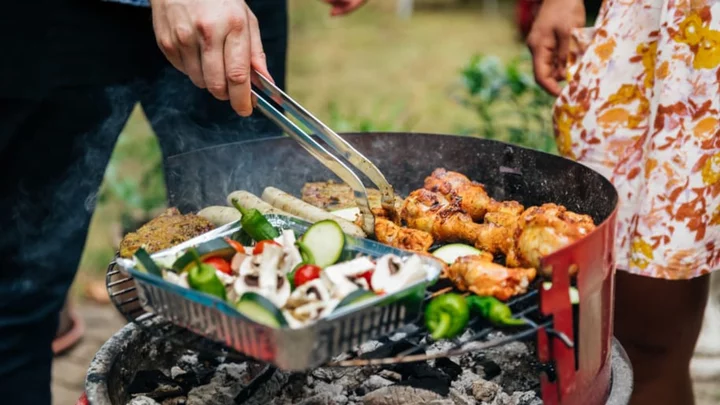
7 Tips for Better Barbecue, According to a BBQ Master
We asked Myron Mixon—a.k.a. the winningest man in barbeque—for some tips to help you nail it this barbecue season.
2023-06-30 02:51
